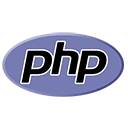Building a Content Management System (CMS) from scratch is a rewarding endeavor that allows you to create a customized platform for managing web content. In this guide, we'll explore advanced features of a PHP CMS and provide sample code to help you get started:
1. Introduction to CMS Development
CMS development involves creating a system for creating, editing, organizing, and publishing content on the web. Advanced CMSs offer features like user management, content versioning, and extensibility.
2. User Management
Implement user management to control access and permissions within your CMS. Create user roles, manage user accounts, and define their access levels. Here's a sample code for creating a user role:
// Define a user role
$role = new Role();
$role->setName('Editor');
$role->setDescription('Can edit and publish content.');
3. Content Versioning
Enable content versioning to track changes and revisions to your content. Implement a version control system that allows users to revert to previous versions. Sample code for creating content versions:
// Create a content version
$version = new ContentVersion();
$version->setContent($content);
$version->setVersionNumber(2);
4. Extensibility and Custom Fields
Make your CMS extensible by allowing users to define custom fields for content types. Implement a flexible data model that accommodates various types of content. Sample code for adding custom fields:
// Add a custom field to a content type
$field = new CustomField();
$field->setName('Additional Information');
$field->setType('Text');
5. Workflow and Approval Processes
Implement workflow and approval processes for content. Define stages and approval requirements for content publishing. Sample code for workflow stages:
// Define a workflow stage
$stage = new WorkflowStage();
$stage->setName('Editorial Review');
$stage->setDescription('Content needs to be reviewed by editors.');
6. Content Taxonomy and Organization
Organize content using taxonomies and categories. Create a structured hierarchy to make content easily discoverable. Sample code for creating a content category:
// Create a content category
$category = new ContentCategory();
$category->setName('Technology');
7. Conclusion
Building a PHP CMS with advanced features offers endless possibilities for content management and customization. By implementing user management, content versioning, extensibility, workflow processes, and organized taxonomy, you can create a powerful and flexible CMS tailored to your specific needs.

